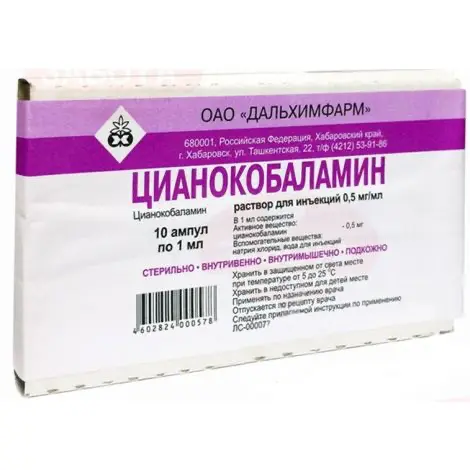Description
Likferr 100 Pharmacodynamics
Iron drug, regulates metabolic processes. It is a colloidal solution, which consists of spheroidal iron-carbohydrate nanoparticles. The core (center) of each particle contains iron [III] hydroxide. The core is surrounded by a sucrose shell, which stabilizes the iron [III] hydroxide, slowly releases bioactive iron, and keeps the resulting particles in colloidal solution. As a result, a complex is formed with a molecular weight of approximately 43 kDa, so that it cannot be excreted unchanged through the kidneys. Iron [III] in this complex is bound to structures similar to those of natural ferritin. The active ingredient of the iron [III] hydroxide sucrose complex dissociates in the reticuloendothelial system into iron and sucrose when it enters the body. Due to the lower stability of iron sucrose compared to transferrin, there is a competitive exchange of iron in favor of transferrin. As a result, about 31 mg of iron is transferred in 24 h. Polycyclic iron [III] hydroxide is partially conserved as ferritin after complexation with the protein ligand, hepatic mitochondrial apoferritin. The hemoglobin index increases faster and with greater reliability than after therapy with iron-containing drugs [II]. Administration of 100 mg of iron [III] leads to an increase in hemoglobin by 2-3 %; during pregnancy, by 2 %. The toxicity of the drug is very low. The therapeutic index is 30 (200/7).
Indications
Iron deficiency (including iron deficiency and acute post-hemorrhagic anemia) in patients who require rapid replenishment of iron;
Patients who cannot tolerate oral iron preparations;
Gastrointestinal tract diseases (GIT) in which oral iron preparations cannot be used.
Contraindications
Hypersensitivity to components of Likferr®;
Anemia not associated with iron deficiency;
Signs of iron overload (hemosiderosis, hemochromatosis) or disorders of iron metabolism;
First trimester of pregnancy (see section “Administration during pregnancy and lactation”).
Dosage and administration
- Administration
Likferr100 is administered only intravenously – slowly by trickle or drip and also into venous section of dialysis system and is not intended for intramuscular injection. Do not administer the full (cumulative) therapeutic dose of the drug at one time
A test dose should be given before the first therapeutic dose is administered. If intolerance occurs during the observation period, administration of the drug should be stopped immediately. Before opening the ampoule should be inspected for possible precipitate and damage. Only brown solution without precipitate may be used. - Drip administration
Liquiferr100 is preferably administered by drip infusion in order to reduce the risk of markedly decreased arterial pressure (BP) and the risk of the solution entering the circulatory space. Immediately prior to infusion, Liquidferr100 should be diluted with 0.9% sodium chloride solution in a 1:20 ratio [e.g., 1 ml (20 mg of iron) in 20 ml of 0.9% sodium chloride solution]. The resulting solution is administered at the following rate: 100 mg of iron in at least 15 minutes; 200 mg of iron in 30 minutes; 300 mg of iron in 1.5 hours; 400 mg of iron in 2.5 hours; 500 mg of iron in 3.5 hours. The maximum tolerated single dose of 7 mg of iron/kg body weight should be administered for at least 3.5 hours, regardless of the total drug dose. - Before the first instillation of a therapeutic dose of Likferr100, a test dose: 1 ml of Likferr100 (20 mg of iron) in adults and children with a body weight greater than 14 kg and half the daily dose (1.5 mg of iron/kg) in children with a body weight less than 14 kg for 15 minutes should be given. In the absence of adverse events, the remainder of the solution should be administered at the recommended rate.
- Jet injection
Liquiferr100 can also be given as an undiluted solution intravenously slowly at a rate of 1 ml of Liquiferr100 (20 mg iron) per minute (e.g. 5 ml of Liquiferr100 (100 mg iron) administered within 5 minutes). The maximum preparation volume should not exceed 10 ml of Liquidferr100 (200 mg of iron) per injection. - After the injection, the patient is advised to fix the arm in an extended position for a while.
- Before the first instillation of a therapeutic dose of Likferr100, a test dose: 1 ml of Likferr100 (20 mg of iron) in adults and children with body weight over 14 kg and half the daily dose (1.5 mg of iron/kg) in children with body weight less than 14 kg should be given for 1-2 minutes. If there are no adverse events during the next 15 minutes of observation, the remainder of the solution should be administered at the recommended rate. After injection, the patient is advised to fix the arm in an extended position.
- Injection into a dialysis system
Liquiferr100 can be injected directly into the venous section of the dialysis system, strictly following the rules described for intravenous injection.

![Iron sucrose (Likferr 100) intravenous 20 mg/ml 5 ml - [5 ampoules]](https://mediscom.com.co/wp-content/uploads/2025/06/Likferr-100-20mg-5ml-5.webp)

![Ascorbic acid, rutoside (Ascorutin) - [50 tablets]](https://mediscom.com.co/wp-content/uploads/2025/06/Ascorutin-50.webp)
![Calcium gluconate 500 mg - [20 tablets]](https://mediscom.com.co/wp-content/uploads/2025/06/Calcium-gluconate-500mg-20.webp)
![Multivitamins (Pentovit) - [50 tablets]](https://mediscom.com.co/wp-content/uploads/2025/06/Pentovit-50-200x200.webp)